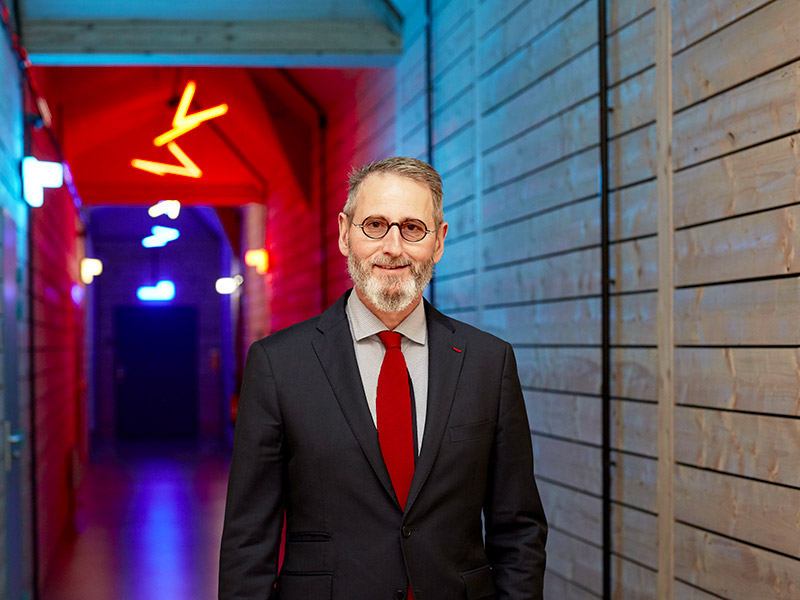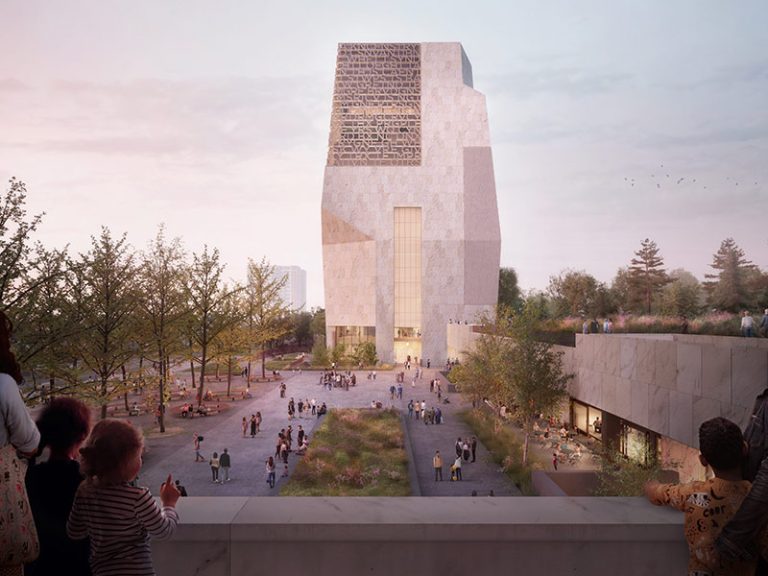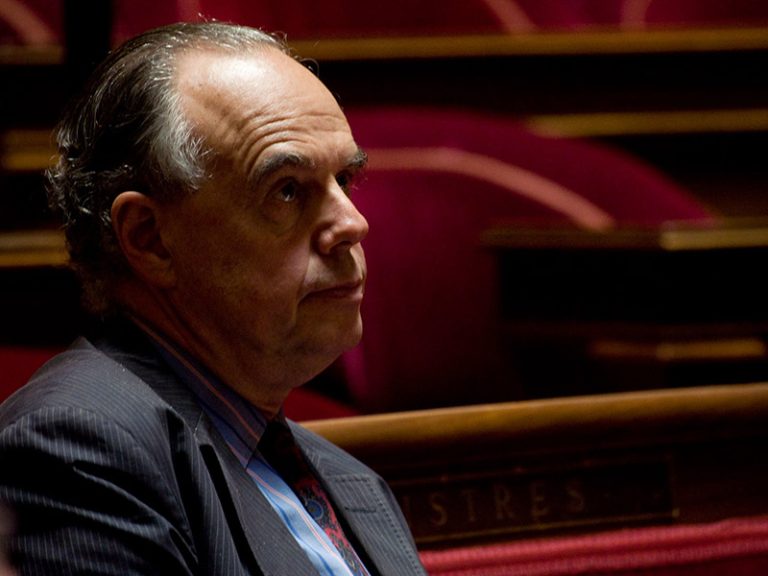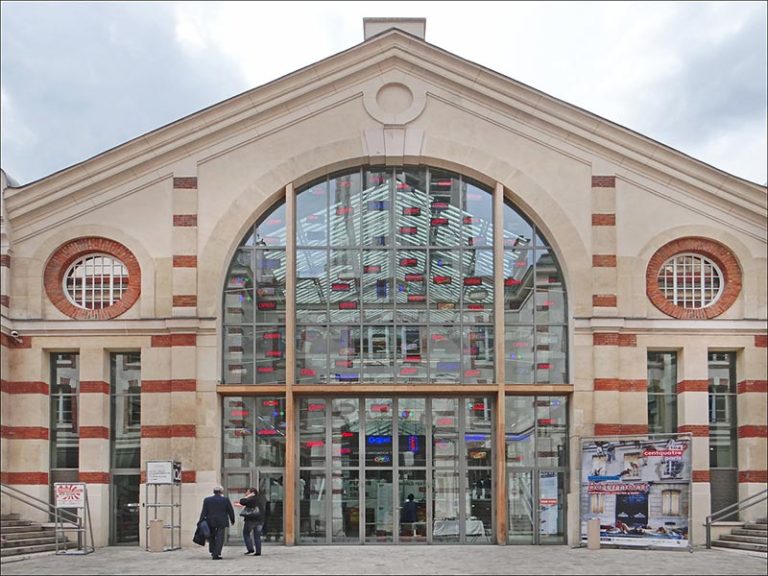President of Universcience since 2015, Bruno Macquart launched during his mandate the major overhaul of the Palais de la Découverte, constrained by the restoration of the Grand Palais that the establishment dedicated to scientific culture shares with the Réunion des musées nationaux (RMN). This museum project should be completed in two stages, 2025 then 2026, creating bridges with its neighbors in the artistic world. The major rehabilitation project awaiting the Cité des sciences et de l’industrie will occupy its successors, and should mobilize no less than a billion euros.
Since the Covid 19 health crisis, the scientific community has often echoed a worried discourse about the level of knowledge and interest of the French in science. Is this a shared observation within Universcience? What tools have you put in place to promote scientific culture?
We all have an idea on the subject of the relationship between our citizens and science, but we wanted to objectify this on an annual basis. We developed a measurement tool, shortly before the 2021 pandemic, the critical thinking barometer. If we look at the results, we note a confirmed interest among the French in science: 69% of respondents say they are interested in it, more than politics and sport. 88% say that science allows us to better understand the world, we can say that the French understand what the scientific approach is for. Young people show an even greater attachment to technology and science. All this leads us to say that there is no divorce between the French and science. We still note disparities, depending on place of residence, gender, standard of living. The profile most distant from science is more rural, from the working class, and more feminine. If we want to be effective, we must reach out to these populations. We are thinking about a system that would allow it to be broadcast in public libraries, to deeply irrigate the territory. The role of our establishment is to provide tools, bring together partners, and share good practices.
The human mediation of the Palais de la Découverte is often cited by scientists as a model of awareness, to the point that some feared its erasure in the new version of the Palais de la Découverte, after work.
In the future Palais de la Découverte, human mediation will be at the heart of the scientific project, but also of the scenography. The mediation spaces will be structuring, with some new devices, including an immersive room in which the visitor will be immersed in a research laboratory, always with human mediation. The Palais is a museum that can be questioned live, and get answers. It will also be a place that is interested in current research, in the questions that researchers are working on. This is one of our main focuses, the second being the objective of showing how science is developed, with the introduction of the sociology of science, of epistemology. We will open a first part in June 2025, with a temporary exhibition on artificial intelligence, then at the end of 2026, we will inaugurate the new permanent exhibitions. We have identified elements that can be delivered independently of each other, in order to open in a pragmatic way, as soon as we can.
Are you going to create bridges with your neighbors, the Réunion des musées nationaux and the Center Pompidou which will temporarily settle in the spaces of the Grand Palais from 2025?
Under the rotunda of the Palais de la Découverte, we will open in 2025 an 800 square meter space co-produced with the RMN, which will be called the Palais des Enfants, with a first exhibition dedicated to transparency. It is an almost worldwide novelty, which will combine art and science for a young audience. Our two teams really came together to invent something that didn’t exist. The presence of the Center Pompidou for a few years also gives us visibility, and it is very likely that we will find configuration paths. We are in a very good intellectual configuration, and the public will benefit from it. One of the great advantages of the new Palais de la Découverte will also be the creation of a specialized entrance for groups. We have a much more family-oriented, younger audience than other institutions, and it is important for us to have a specific welcome sequence for this very, very strategic audience.
The renovation of the Cité des sciences et de l’industrie, which will soon be forty years old, is estimated to cost around one billion euros. What is the status of the assembly of this major operation?
It is a heavy file, which is under investigation, and requires varied expertise. There are many different parameters that come into play, and we are in a phase of constructive and open dialogue with the Ministry of Culture for this operation which will be important. After the Palais de la Découverte, it is the construction site that will occupy my successor, and the successor of my successor. Before that, we will take care of our Children’s City, which is more than thirty years old, and which has served as a reference for many museums for young audiences. Last year, the “city of little ones” like that of big ones broke their attendance records, with 803,000 visitors. So much so that we are committing to their renovation at the end of June! It is time to invent and propose a new children’s city: we are working with a committee of experts and early childhood specialists, with keen attention paid to the issue of screens, but also to the relationship with girls. It is at this young age that we see gender bias appear, and we must pay attention to it, in our content and the activities offered. It is an investment of several million euros, which will be carried out in two stages, alternately closing the “city of the big ones”, then the “city of the small ones”, with two inaugurations in 2025 then 2026.
Universcience has its own funding rate of around 20%. What are the levers that allow you to increase your revenue?
Beyond traditional resources, we have more specific activities, such as traveling exhibitions. At the moment, we have exhibitions in Lyon, Pleumeur-Bodou, Laval, Montreal. We are also duplicating certain elements of our scenographies for other museums, such as in Taiwan. This is an activity that has resumed very well after the Covid break. Our cultural engineering activity is also working well, we are working on the project of the Cinema Museum in Cannes, on the Pasteur Museum. We have just raised awareness of accessibility for Saudi Arabia, and we may be required to support France’s diplomatic efforts around the world. Our experience makes Universcience the leading traveling exhibition service in France, and among the most important on a European scale.







